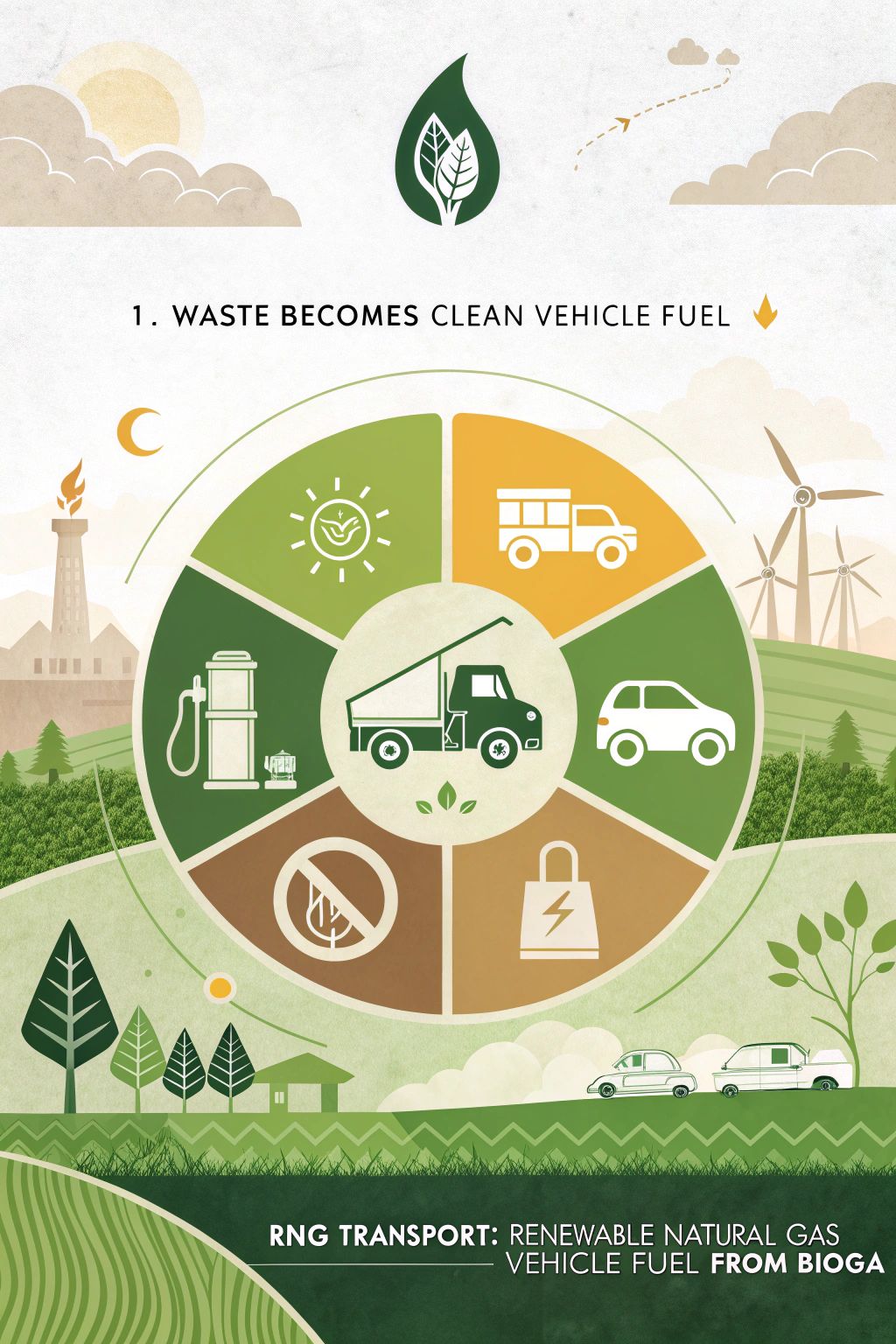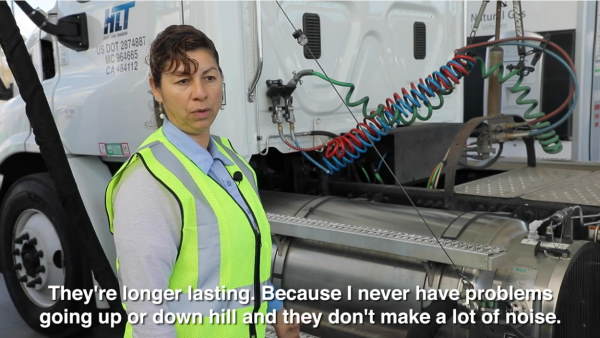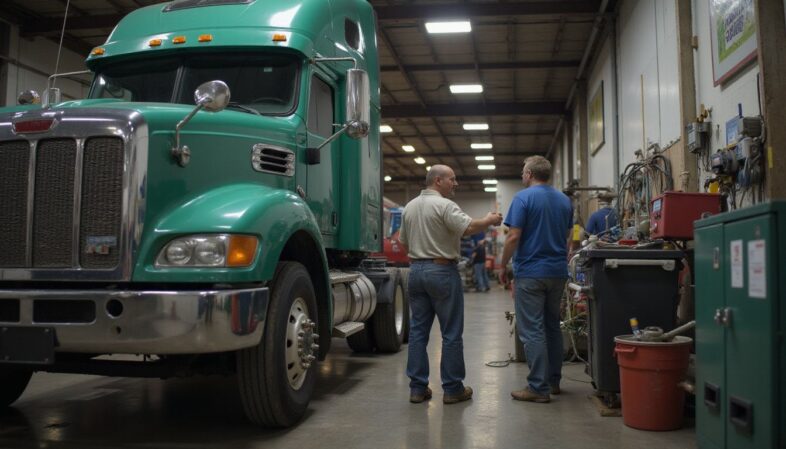The transport industry faces a big challenge today. It needs to cut down on pollution and transition to renewable fuel sources while keeping vehicles running smoothly. RNG, Renewable Natural Gas Transport, offers an exciting solution fast being adopted by fleet operators.
This clean energy comes from sources like food waste and livestock farms (especially dairy). It can power buses and trucks, making the air cleaner and conversions are possible for existing trucks.
RNG is biogas that has been purified, known as upgrading in the biogas industry. It is very pure methane produced to a quality that makes it interchangeable with the piped natural gas in national gas grids, so it can replace regular gas or diesel in engines.
Over 300 places in North America are operating biogas plants turning organic waste, including crop waste and manure into RNG right now. This blog will show how using RNG can help the transport sector become greener and more efficient.
Keep reading to learn more about this amazing fuel source!
Key Takeaways
- Renewable Natural Gas (RNG) originates from decomposing organic matter, providing a more environmentally friendly alternative to fossil fuels. Over 300 RNG facilities in North America transform waste into clean energy, contributing to the fight against climate change by capturing methane emissions.
- RNG production methods utilise biogas from landfills, livestock operations, and wastewater treatment plants. The Altamont Landfill in California, for instance, converts landfill gas into RNG for vehicles, demonstrating the effectiveness of this technology in cutting greenhouse gas emissions.
- Vehicles that run on RNG, such as Bio-CNG and Bio-LNG fuelled buses and heavy goods vehicles (HGVs), show significantly reduced particulate emissions in comparison to traditional diesel engines. This assists in achieving a far more healthy city air-quality, but also net-zero targets by providing carbon-negative fuel options.
- The expansion of the RNG industry promotes the creation of anaerobic digestion plants (AD Plants) these are locally based and create environmentally friendly jobs. This enhances energy source diversity within the transport sector. A study indicated that developing additional AD facilities could generate thousands of operational and construction jobs across diverse communities.
- Government incentives encourage shifting to RNG in heavy-duty fleets by offering grants and tax advantages that aim to decrease particulate emissions and engine noise while fostering sustainable transport solutions.

What is Renewable Natural Gas (RNG)?
Renewable Natural Gas (RNG), also known as biomethane, is derived from the gas generated by the decomposition of organic materials. Locations such as landfill sites, livestock farms, and wastewater treatment facilities are optimal sources for this.
Contrasting with conventional natural gas mined from underground that contributes to global warming, RNG plays a counteractive role. It combats climate change by collecting methane – a potent greenhouse gas much more powerful than carbon dioxide over a shorter period.
This process reduces methane emissions and supplies an alternative energy source, which can match the cleanliness of fossil fuels minus their detrimental effects.
With a network of over 300 RNG facilities in North America converting waste into energy, the impact of this eco-friendly fuel on energy dependability and sustainability initiatives is clear.
From the perspective of someone who has witnessed these operations, the conversion of what was previously deemed waste into a valuable fuel source is both notable and vital for a more environmentally friendly future.

How is RNG Produced?
Renewable Natural Gas (RNG) comes from the decay of organic material. Experts use technology to clean and transform this gas into fuel for vehicles.
Biogas from Landfills
Landfills emit a type of gas abundant in methane, a heat-trapping compound significantly more potent than carbon dioxide. This originates from the degradation of organic refuse concealed beneath heaps of garbage.
The US employs this beneficially, with 532 landfill gas (LFG) projects operational as of July 2023. A remarkable case is Waste Management's Altamont Landfill in California, converting LFG into renewable natural gas (RNG), apt for powering vehicles.
Recently, biogas experts explored the Altamont project and personally observed their transformation of detrimental gases into clean energy. By leveraging sophisticated biofuel technology, these establishments trap LFG prior to its discharge into the atmosphere and upgrade it to grid injection quality methane.
This procedure is the best quick “win” for society around the globe to reduce short term global heating. This has been recognised during multiple recent annual COP meetings and many nations including the US has pledged to take moves to flare or utilize all possible landfill methane.
In these uncertain times biogas production contributes to energy security by providing an alternative source of vehicle fuel made locally, while also diminishing greenhouse gas emissions.

Biogas from Livestock Operations
Livestock farms produce a lot of waste, over 70 million tonnes in the US every year. This waste can be more than just a disposal problem; it's a source of renewable energy through anaerobic digestion.
Currently, only 3% of this is turned into biogas, even though there are about 470 anaerobic digesters at work on these farms. These systems have the power to create over 13 million megawatt-hours of electricity annually.
Turning livestock waste into biogas cuts down on methane emissions, which are a big part of global warming. Methane from livestock accounts for roughly 10% of the US's total methane emissions.
By using advanced biofuel technologies like anaerobic digesters, farms can help decarbonise transportation and contribute to net-zero goals. Next up is how wastewater treatment plants also play a role in RNG production.

Biogas from Wastewater Treatment
Progressing from farming operations, wastewater treatment facilities (WWTPs) present yet another bountiful source of biogas. The US is endowed with over 16,000 WWTPs, but only approximately 1,200 utilise the technology to transmute waste into energy through anaerobic digesters.
The WWTP in Longmont, Colorado is a commendable instance. It successfully transforms waste into renewable natural gas (RNG) for vehicular use. This procedure supports the advancement to zero emissions in transport and proposes a carbon-neutral fuel substitute.
Creating RNG from wastewater confronts obstacles such as elevated transportation expenses and the necessity for advanced processing technologies. Regardless of these hurdles, energy garnered from WWTPs could cater to up to 12% of the nation’s electricity requirement.
This potential emphasises the significance of investing in apparatus and innovation in this area. As we aim for decarbonising transport, capitalising on RNG from wastewater presents an intriguing avenue towards purer air and curtailed greenhouse gas emissions.
Benefits of RNG as a Vehicle Fuel
Using Renewable Natural Gas (RNG) as a vehicle power source cuts down on harmful air waste. It helps in making more green jobs. RNG also adds more choices to the types of fuel we can use for cars and trucks.
Explore how RNG changes the game for transport by offering a cleaner, sustainable option.
Reducing Greenhouse Gas Emissions
Renewable Natural Gas (RNG) plays a crucial role in reducing greenhouse gas emissions. It has the potential to be carbon-neutral or even carbon-negative. Heavy goods vehicles (HGVs) powered by RNG can cut their carbon footprint by up to 90%.
This reduction significantly impacts climate change efforts.
Methane capture is essential for this process. Converting captured methane into RNG leads to major cuts in greenhouse gases. Studies show that bio-LNG reduces particulate emissions by as much as 85%.
These reductions help cities achieve cleaner air and meet emission standards more effectively. The shift to natural gas vehicles (NGVs) represents a step forward in decarbonising the transport industry while supporting green jobs and sustainable development.
Creating Green Jobs
RNG creation drives significant job growth. In 2021, the US Coalition for Renewable Natural Gas reported 22,600 jobs and $2.68 billion in GDP from this sector. The operation of landfill gas projects and anaerobic digesters fuels employment opportunities across various communities.
For instance, a fleet in Perris, California benefits directly from RNG's clean transportation initiatives.
Developing more RNG facilities could generate even more positions. Experts estimate that an extra 100 facilities would create about 4,550 operational roles and over 10,600 construction jobs.
These green jobs support local economies and contribute to carbon emission reductions by promoting cleaner energy resources like upgraded biogas and compressed natural gas (CNG).
Boosting Fuel Diversity
RNG acts as an advanced biofuel that enhances fuel diversity within the transport sector. It creates a cleaner alternative to conventional natural gas and decreases reliance on fossil fuels.
This shift promotes better air quality. Successful case studies highlight RNG's role in diversifying fuel sources for fleet operations.
BP's partnership with Aria Energy exemplifies how innovation can convert agricultural waste into RNG efficiently. As more companies adopt RNG, they contribute to decarbonising transportation while boosting green jobs within the industry.
The growing use of Bio-CNG and Bio-LNG options showcases the potential of RNG in heavy goods vehicles and public transit systems. Next, we will examine RNG’s impact on transportation efficiency.

RNG in Transportation
RNG plays a crucial role in modern transport. It serves as a clean fuel for buses and heavy goods vehicles, reducing harmful emissions while promoting sustainability.
Bio-CNG and Bio-LNG for Transport
Bio-CNG and Bio-LNG serve as effective transport fuels derived from renewable natural gas (RNG). These fuels can power vehicles more efficiently than traditional diesel. In fact, according to government tax regimes where tax rates are low for RNG, RNG vehicles may boast up to 200% better fuel economy compared to diesel models.
Bio-CNG is compressed for ease of use, while Bio-LNG involves cooling biomethane to about -150°C, allowing it to become liquid.
The adoption of RNG in heavy goods vehicles (HGVs) can significantly reduce greenhouse gas emissions. This move supports the industry's commitment to net zero targets by offering a carbon-negative alternative.
With over 27 million natural gas vehicles reported globally as of 2019, interest in biofuels continues to grow within the transport sector. Incorporating these alternatives aids in maintaining stricter emissions standards and boosts fuel diversity across fleets.
RNG for Heavy Goods Vehicles (HGV) and Fleets
RNG, or Renewable Natural Gas, serves as an effective fuel for heavy goods vehicles (HGV) and fleets. These vehicles account for 20% of CO2 emissions in the US transportation sector.
By switching to RNG, companies can significantly reduce their greenhouse gas emissions. This green fuel offers competitive pricing compared to diesel, with a payback period of only 18 to 24 months.
Using RNG also brings benefits like reduced engine noise and lower particulate emissions. Studies show that RNG cuts engine noise by up to 50% and reduces particulate emissions by up to 85%.
The US government supports this shift through grants and tax incentives aimed at promoting RNG technologies in heavy-duty fleets. Many organisations recognise the potential of biogas from sources such as municipal solid waste and livestock operations as valuable energy sources in decarbonising transport systems.
Conclusion
RNG presents a promising solution for cleaner transportation. This renewable fuel captures harmful methane emissions and transforms waste into energy. Its use in natural gas engines helps reduce greenhouse gases significantly.
With over 300 RNG facilities operational in North America, the future looks bright for sustainable transport. Embracing RNG can lead to a decarbonised world while enhancing energy diversity and job creation in the green economy.

FAQs
1. What is RNG Transport and how does it relate to renewable natural gas?
RNG Transport refers to the use of Renewable Natural Gas as a source of energy for vehicles. It's produced from waste products like digester gas and woody biomass through processes such as thermal gasification.
2. How can RNG be used in different types of vehicles?
Renewable fuel like RNG can power various types of vehicles, including those with natural gas engines, CNG buses, and even electric vehicles (EVs) when used in conjunction with a fuel cell.
3. Can using RNG contribute towards decarbonising our energy sources?
Yes, indeed! Using RNG helps offset GHG emissions and contributes to decarbonisation by replacing traditional fuels with this alternative fuel that has lower global warming potential.
4. Is it possible to produce LNG from RNG?
Absolutely! Through liquefaction plants, renewable natural gas can be transformed into Liquefied Natural Gas (LNG), another form of clean-burning alternative fuels.
5. How does the production process work for creating RNG?
The creation of Renewable Natural Gas involves capturing biogas from sources like agriculture or biodigesters and removing contaminants such as hydrogen sulphide. Then through direct injection into the infrastructure or conversion in a gasifier, we obtain combustible RNG ready for transport uses.
6. What makes Renewable Natural Gas stand out among other sources of energy?
RNG stands out due to its carbon-negative nature when sourced from certain waste products along with its versatility–it can supplement wind power or solar power for off-grid applications while also being compatible with existing vehicle technologies.
References
- https://www.nationalgrid.com/stories/energy-explained/what-is-renewable-natural-gas-rng
- https://www.sciencedirect.com/science/article/abs/pii/S0196890423000614
- https://www.eesi.org/papers/view/fact-sheet-biogasconverting-waste-to-energy
- https://www.sciencedirect.com/science/article/pii/S2772427124000019
- https://pmc.ncbi.nlm.nih.gov/articles/PMC8284984/
- https://afdc.energy.gov/fuels/natural-gas-renewable
- https://blog.anaerobic-digestion.com/biogas-natural-gas-transport/
- https://www.anl.gov/sites/www/files/2020-11/RNG_for_Transportation_FAQs.pdf
- https://www.tandfonline.com/doi/full/10.1080/17597269.2020.1821571
- https://biogasworld.com/news/renewable-natural-gas-heavy-duty-vehicles/




